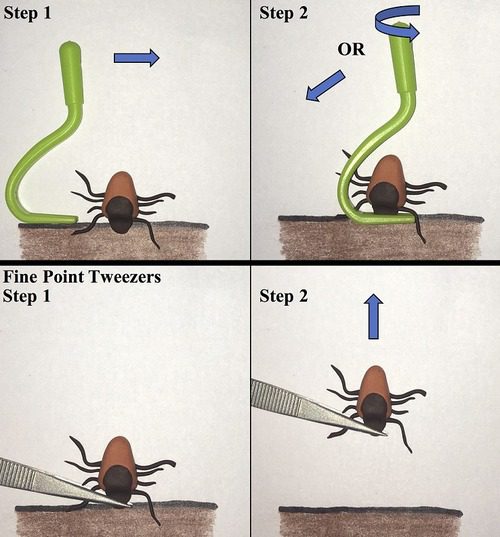How to Remove a Tick from a Cat
If you’ve ever found a tick on your cat, you know how unsettling it can be. These tiny parasites latch onto the skin, feeding on blood and potentially transmitting harmful diseases. While it’s important to remove a tick promptly, doing so incorrectly can lead to infection or leave parts of the tick behind. Knowing the safest way to handle the situation can make the process less stressful for both you and your pet. If you’re unsure about how to proceed or need professional guidance, the experienced team at Lincolnway Veterinary Clinic can guide you through the process or remove the tick ourselves. Call (574) 256-1871 today for expert advice and care.

Identifying Ticks on Cats
Before learning how to remove a tick from a cat, it’s essential to know what to look for. Ticks are small, oval-shaped parasites that embed themselves into a cat’s skin, often appearing as tiny bumps. While they can be difficult to spot, checking your cat’s fur regularly is an excellent way to catch them early.
Common Tick Locations on Cats
Ticks prefer warm, hidden areas on a cat’s body. The most common places to find ticks include:
- Around the ears
- Under the collar
- Between the toes
- Near the tail base
- Around the eyes and eyelids
Running your hands through your cat’s fur and feeling for unusual lumps can help identify a tick before it causes discomfort.
The Risks of Ticks on Cats
Ticks can cause more than just skin irritation. These parasites carry diseases that can affect your cat’s health. While cats are less susceptible to tick-borne illnesses than dogs, they can still contract serious infections, including:
- Cytauxzoonosis: A deadly disease transmitted by ticks, primarily in the southeastern and midwestern United States.
- Lyme Disease: Though rare in cats, this bacterial infection can cause fever, lethargy, and joint pain.
- Haemobartonellosis: Although uncommon, this blood parasite infection can lead to anemia and other health issues.
If you notice signs of illness after removing a tick, contact Lincolnway Veterinary Clinic at (574) 256-1871 for an evaluation.
Steps for Safe Tick Removal
Once you’ve identified a tick on your cat, it’s essential to remove it carefully. Using improper techniques can increase the risk of infection or leave parts of the tick embedded in the skin. Here’s how to remove a tick from a cat correctly:
1. Gather the Necessary Supplies
Before removing a tick, make sure you have the right tools:
- Fine-tipped tweezers or a tick removal tool
- Gloves to protect yourself
- Rubbing alcohol or antiseptic
- A small container with a lid
- A damp cloth or antiseptic wipes
2. Restrain Your Cat Gently
Cats can be sensitive when touched in unfamiliar ways. Enlist the help of another person to hold your cat still. Wrapping your cat in a towel can also help keep them calm and prevent sudden movements.
3. Remove the Tick Carefully
Using fine-tipped tweezers, grasp the tick as close to the skin as possible. Pull it out slowly and steadily in a straight motion without twisting or squeezing. Avoid crushing the tick, as this can release harmful bacteria into your cat’s bloodstream.
4. Dispose of the Tick Properly
Place the tick in a small container filled with rubbing alcohol to kill it. Never crush a tick with your fingers or flush it down the toilet, as this does not guarantee it will be destroyed.
5. Clean the Affected Area
Once the tick is removed, clean the bite site with an antiseptic. Monitor the area for signs of redness, swelling, or infection over the next few days.

What to Do After Removing a Tick
After you’ve removed a tick from your cat, continue monitoring their behavior and health. While most tick bites heal without complications, some may lead to infections or allergic reactions.
Signs of Infection or Illness
Contact Lincolnway Veterinary Clinic if you notice any of the following symptoms:
- Swelling or redness around the bite site
- Loss of appetite
- Lethargy or weakness
- Fever or shivering
- Unusual grooming or scratching at the bite location
How to Protect Cats From Ticks
The best way to handle ticks is to prevent them altogether. Cats that roam outdoors are more likely to encounter ticks, but there are several steps you can take to minimize the risk:
- Use a veterinarian-approved tick prevention product. Spot-on treatments, oral medications, and tick collars can help keep ticks away.
- Keep your yard maintained. Trim tall grass and remove leaf piles where ticks thrive.
- Check your cat regularly. Routine inspections can catch ticks before they cause harm.
- Limit outdoor access. Keeping your cat indoors reduces the chance of tick exposure.
When Is It Necessary to Seek Veterinary Care?
Some tick bites require professional attention. If you’re unable to remove a tick completely or your cat shows signs of illness after a tick bite, schedule a veterinary visit. Your veterinarian can safely remove any remaining parts of the tick and check for signs of infection or disease. For expert guidance on tick prevention and removal, contact Lincolnway Veterinary Clinic at (574) 256-1871 to book an appointment today.

